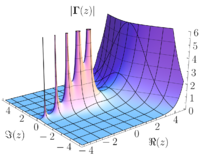Zeros and poles

Imagine you’re playing with a toy car on a bumpy road. The bumps are like rocks, and your car jumps and wiggles around every time it hits one. Now, imagine you have another toy car that can hover over the bumps without any trouble.
In mathematics, we have something called a function, which is like a rule or a recipe that gives you an output when you put in an input. Some functions are like the bumpy road and some are like the hovercraft.
In particular, some functions have points where they behave differently, and these points are called zeros and poles.
A zero is like a flat spot on your bumpy road. When your car hits the zero, it glides over it smoothly without jumping or wiggling. In a function, a zero is a point where the output is equal to zero.
A pole, on the other hand, is like a really big bump on your road that your car can’t get over. It gets stuck there and wobbles back and forth until you give it a push. In a function, a pole is a point where the output becomes infinitely large (or small).
So, to sum it up:
- A zero is a point in a function where the output is zero and everything is smooth sailing.
- A pole is a point where the output becomes very large (or small), like a really big bump on the road that your car can’t get over.
In mathematics, we have something called a function, which is like a rule or a recipe that gives you an output when you put in an input. Some functions are like the bumpy road and some are like the hovercraft.
In particular, some functions have points where they behave differently, and these points are called zeros and poles.
A zero is like a flat spot on your bumpy road. When your car hits the zero, it glides over it smoothly without jumping or wiggling. In a function, a zero is a point where the output is equal to zero.
A pole, on the other hand, is like a really big bump on your road that your car can’t get over. It gets stuck there and wobbles back and forth until you give it a push. In a function, a pole is a point where the output becomes infinitely large (or small).
So, to sum it up:
- A zero is a point in a function where the output is zero and everything is smooth sailing.
- A pole is a point where the output becomes very large (or small), like a really big bump on the road that your car can’t get over.
Related topics others have asked about:
